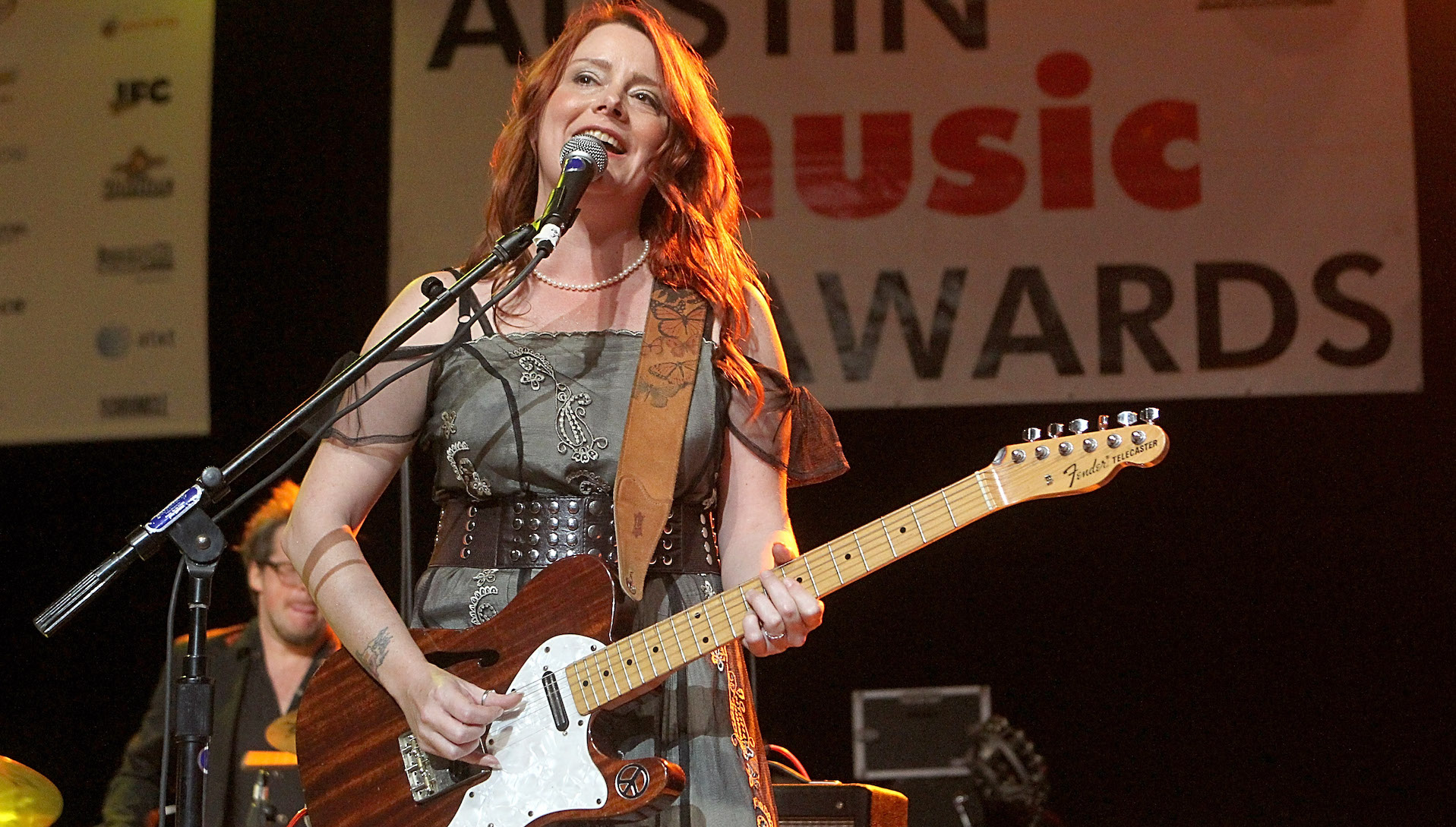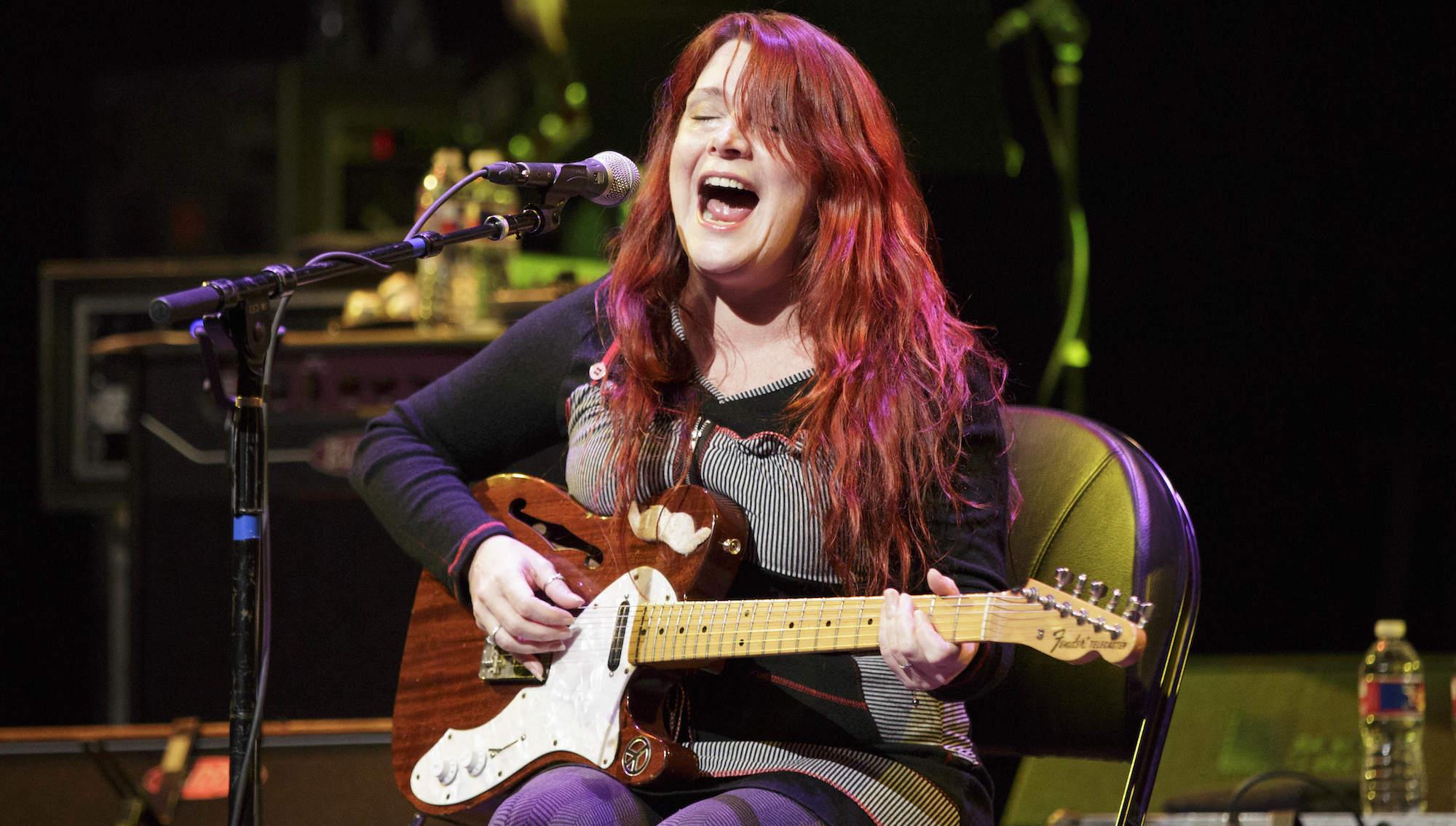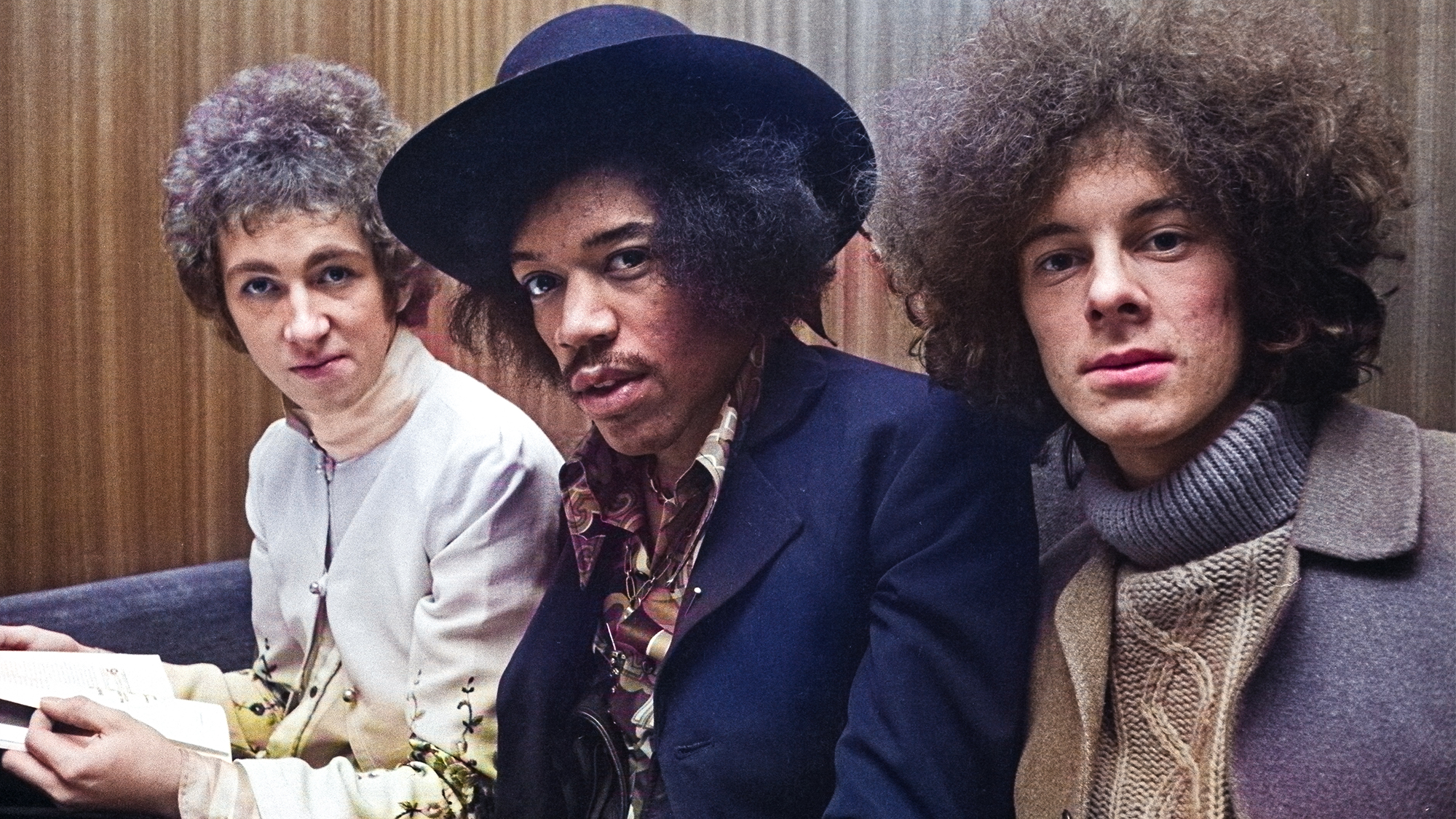“I got into the Who when I was playing my Mom’s Martin. I thought it looked cool to do the windmill, but when my Mom saw how badly I scratched her guitar she said, ‘No more pick for you’”: Carolyn Wonderland on Tele Thinlines and Houston guitar heroes
In this classic GP interview, the Texan with the stunning voice (and equally impressive six-string chops) discusses her tonal inspirations, and why – decades after her early windmilling damage – she continues to stick with fingerstyle

This interview was originally published in Guitar Player magazine in 2012.
When Carolyn Wonderland took the stage at Yoshi’s in Oakland, California, the crowd didn’t know exactly what to make of her at first. She appeared somewhat shy and unassuming, armed with a Tele, a lap-steel, and a tiny Fender combo.
As the band went into the opener, the first thing listeners were struck by was her singing voice, an amazing instrument unto itself, with uncommon power, dynamics, and range. Comparisons to Janis Joplin are inevitable, but Wonderland possesses a purity of tone that is all her own. She is such a good singer that some might initially overlook her guitar playing, but not for long.
Midway through the first tune, her attack, touch, and tone took center stage and held their own with her tremendous vocals for the rest of the night – no mean feat. By the second song, she had won the entire audience over and overwhelmed the wait staff at Yoshi’s who, not realizing who they were dealing with, didn’t schedule enough people to handle the increasingly boisterous crowd.
Next time Carolyn Wonderland comes to town, the club had better be ready, because everyone in attendance will surely come back and bring their friends.
And so it has gone for the Houston native who now resides in Austin (“The land of free guitar lessons,” she says), playing gig after gig and watching as her gutsy voice and fiery 6-string and lap playing hooks and reels in new fans. Her latest release, Peace Meal, will surely garner her even more supporters with its broad range of tones and grooves and boatloads of great guitar playing.
Talk about your right-hand technique. You don’t use a pick.
All the latest guitar news, interviews, lessons, reviews, deals and more, direct to your inbox!
“When I was about 11, I got really into the Who when I was playing my Mom’s old Martin. I thought it looked cool to do the windmill thing, but when my Mom saw how badly I had scratched up her guitar she said, ‘No more pick for you.’
“She also had a Strat that she let me play, but I still didn’t use a pick. I like playing fingerstyle because there are three different surfaces: You’ve got the nail, the side of your finger, and the fingertip. It’s cool. I tried a pick a few times – like, for mandolin – and there have been times, especially on acoustic, where I wish I could play with a pick, but I don’t.”
Your record has a diverse array of tones. How did you get the guitar sound on St. Marks?
“That was the magic of the room. We were at Levon Helm’s place. I set up my live rig one time for all the tracks we did there and we did all the tracking basically live. We also cut Golden Stairs, which is a song that my friend Vince Welnick wrote with Robert Hunter years ago.
“I hadn’t done it in a long time. Vince and I recorded it when we were in the Jerry Lightfoot Band of Wonder, and he’s since passed away. It’s one of my favorite songs, but it made me cry for a few years. Levon’s seemed like the perfect place to do it again.
“We did the Janis song, What Good Can Drinkin’ Do, because the first place I ever did that song live was at Levon’s, so that seemed to make sense. We tracked Shine On there, too.”

Your live rig when you played in Oakland was a Tele, a Tube Screamer, and a Fender Blues Junior. Is that what you recorded with?
“No, I used my red sparkle ValveTech amp. I adore those amps. They’re freaking awesome. But at that gig that you saw she happened to be in the shop, so I had my trusty little Blues Junior. My ears prefer the ValveTech but my back loves that Blues Junior.
“My Tube Screamer is the Keeley Mod version. It sounds more like the original, and the footswitch is more solid. There’s a roundness to it. It doesn’t get quite as jumpy. I kick it in for solos and dirty licks.”
Is the Telecaster Thinline your main guitar?
“Yeah. She and I have been through a great deal together. I also have a Gibson Blues Hawk that I love – as well as a bunch of other instruments – but the Tele’s the one that always goes out with me. That guitar has Joe Barden pickups. Originally I got them so it could keep up with a Les Paul, but then I fell in love with them. Because of the blade, you can do all those pedal-steel-style bends and never go off the magnet.”
It seems like you typically run both pickups at once.
“I like to start in the middle, and then I can go a little darker on the neck pickup if the song needs it or a little nastier on the bridge. The middle position is just crunchy enough that you can still strum a chord and not get lost.”
How would you describe the difference between your Tele playing and your lap-steel playing?
“My approach is to hang on for dear life on both instruments. Because I’m less experienced on the lap-steel, it’s sometimes more fun to write things. You come up with accidental riffs because you’re not stuck in that box yet. It’s a little more experimental. I also like to think of horn parts, and because of the way the strings line up on the lap, there’s almost always a triad in there somewhere, which makes those kinds of parts easier.”
Your intonation on the lap-steel is fearless. You don’t even look when you throw the bar down.
“For the first few years on that instrument my intonation was all over the place. I had to learn how to close my eyes and just listen for it.
“Most of what I know on lap-steel is from watching folks. The lesson that I got the most out of was being in the same room with Cindy Cashdollar. She’s one of my favorite lap-steel players. I was lucky enough to kidnap her for this record, and she played on What Good Can Drinkin’ Do.”
What’s going on when you bounce both hands on the strings when you’re playing rhythm on the lap-steel?
“I’m trying to find a way to be rhythmic and percussive and also give myself a couple of clue notes to help my singing. Depending on the monitors, you can’t always hear what’s going on. I try to leave myself some notes here and there so I can go into a lick and know where I’m at.”
You phrase with a lot of triplets when you play electric – that sort of “da-diddly, da-diddly” thing. Where does that influence come from?
“I’ve had a couple of guitar players ask me to show them that lick that you just sang, I’m pretty sure I got that from Willie Nelson. There’s a live version of Whiskey River where he goes ‘wang-diddly, wang-diddly’ over and over. For whatever reason it stuck in my head and it makes me giggle. I do it a lot, but I always try to stop just this side of a ‘look at me’ lick.”
Who else inspired your lead playing?
“Most of the folks I saw in Houston: Little Screamin’ Kenny, Jerry Lightfoot, Albert Collins. They would all blow my mind as a kid. Eddie Shaver was a huge influence. I put him right up there with Danny Gatton, who was another guy who just killed me when I saw him.
“They have a similar thing. Some people talk in little spurts or sentences. These guys had paragraphs and novels and they never repeated themselves. I’m still hanging on to the few licks that I can, but when I let go, I try to be more like them.”

Who inspired you from a guitar tone standpoint?
“Billy Gibbons. My Mom always played acoustic and had this beautiful, rich tone that I loved, but it was folks like Billy Gibbons and Jimi Hendrix and the bizarre sounds that they made that fascinated me as a kid.”
What’s the difference between a good gig and a great gig?
“When people get it and you see them light up. Sometimes the band thinks we played really well, but the crowd doesn’t get it. But when there’s that positive feedback loop, when the energy is coming back to you, you don’t have to work so hard expending or trying to create energy, because it’s already there. It’s effortless.”


